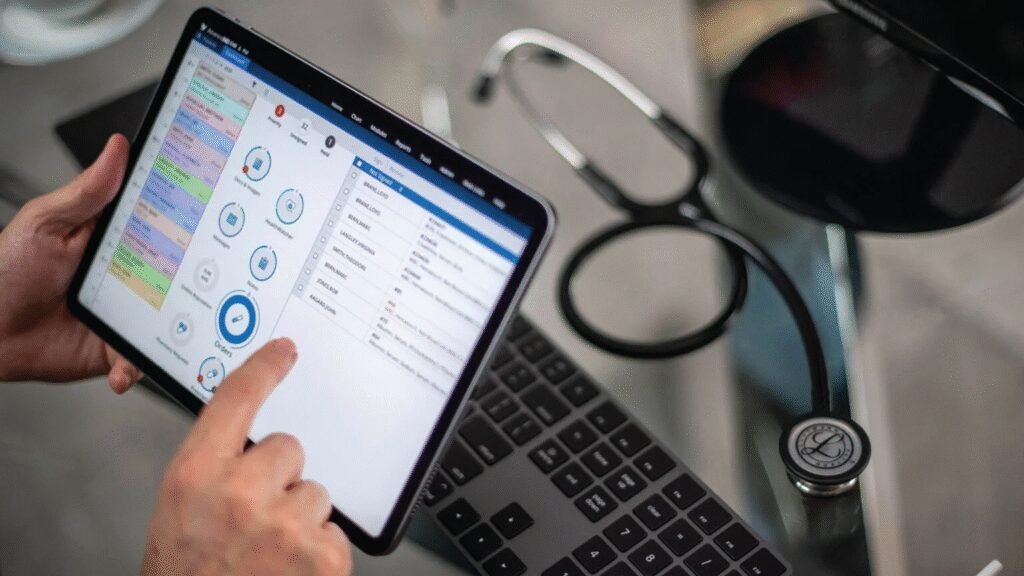Modern Electronic Health Records (EHRs) are more than just digital files—they are the operational core of healthcare delivery. To meet today’s healthcare demands, EHRs must integrate with various technologies. These integrations reduce errors, boost efficiency, and support better patient outcomes. Whether in a small clinic or a large hospital, seamless system connections are now a must. Let’s explore the top 10 integrations every modern EHR should offer.
1. Laboratory Information System (LIS) Integration
LIS integration enables clinicians to order tests and receive results directly in the EHR. It eliminates delays caused by manual data handling and improves diagnostic accuracy. Providers can track sample status, view results instantly, and make faster decisions. This integration is vital for maintaining smooth lab-to-clinic communication and patient safety.
2. Pharmacy System Integration
With pharmacy integration, prescriptions can be sent electronically to a patient’s preferred pharmacy. It ensures medication safety by flagging drug interactions and allergies. Providers can check insurance formularies and medication availability in real-time. It minimizes prescription errors and enhances the patient’s medication experience.
3. Radiology Information System (RIS) and PACS Integration
This integration allows providers to access imaging reports and diagnostic scans within the EHR. Physicians no longer need to log into separate systems to view radiology results. It supports faster, more accurate diagnosis and treatment planning. Access to imaging history also helps avoid duplicate testing.
4. Billing and Practice Management Integration
Billing integration within a robust Patient Management Software connects the clinical side with administrative operations like invoicing and claims. It simplifies insurance verification, reduces claim denials, and supports real-time tracking. Automating financial workflows minimizes human error and speeds up reimbursements. Practices can improve cash flow and patient billing transparency.
5. Telemedicine Platform Integration
Telemedicine integration brings virtual care directly into the EHR workflow. It allows video consultations, documentation, and e-prescriptions in one place. Clinicians can schedule appointments and follow-ups efficiently. It supports remote patient care, especially in rural or underserved areas.
6. Health Information Exchange (HIE) Connectivity
Connecting to HIEs enables providers to access patient records from other facilities. This is crucial in emergencies or when treating chronic conditions. It ensures continuity of care, prevents redundant tests, and fills gaps in patient history. HIE integration boosts data sharing across the care spectrum.
7. Clinical Decision Support (CDS) Tools
CDS tools provide intelligent prompts and alerts during patient encounters. They offer evidence-based guidance to improve diagnosis and treatment. From drug interaction warnings to care plan suggestions, CDS enhances clinical decisions. This integration promotes patient safety and guideline adherence.
8. Mobile App Integration
Mobile EHR access gives providers the flexibility to work on the go. Doctors can view records, approve labs, and message staff from their phones or tablets. It reduces delays in care and supports faster decision-making. Mobile integration is essential in today’s fast-paced clinical environment.
9. Patient Portal Integration
Patient portal integration allows individuals to access their health information 24/7. Patients can view test results, communicate with providers, and manage appointments. This promotes transparency and builds trust. Engaged patients are more likely to follow care instructions and return for follow-ups.
10. API and Third-Party App Integrations
APIs allow the EHR to connect with specialized tools like fitness trackers or chronic care apps. These third-party integrations expand EHR functionality and enable customization. Clinics can adopt innovations without changing their core systems. Open API support ensures long-term adaptability and growth.
Conclusion
Today’s Electronic Health Record Software must be dynamic, connected platforms—not isolated digital charts. The integrations listed above transform EHRs into powerful hubs of clinical and administrative activity. They streamline workflows, empower patients, and ensure smarter healthcare delivery. Choosing an EHR with these integrations is essential for staying competitive and delivering high-quality care in the modern era.







